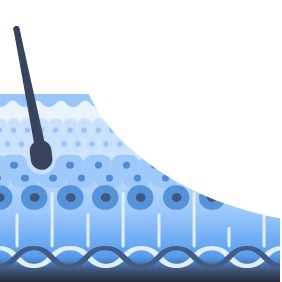By continuing browsing, you agree to the storing of cookies on your device to enhance your site experience and for analytical purposes. To learn more about how we use the cookies, please see our Cookie Policy.
NexoBrid®
Disruptive Therapy for Burn Care
Introducing a New Paradigm in Treatment of Severe Burns
- Indication:Eschar removal of deep partial and full thickness burns
- Classification:Orphan Biological drug
- Target Audience:Hospitalized patients (burn centers and burn units)
- Status:FDA Approval in United States, Europe and other international markets

NexoBrid, a concentrate of proteolytic enzymes enriched in bromelain, is an easy to use, topically-applied product that removes eschar in four hours and does not harm the surrounding healthy tissues. Eschar removal is a critical first step in the treatment of severe burns. Under existing standard of care, burn eschar may be removed either by surgical approach, primarily surgical excision, which is traumatic and may result in loss of blood and viable tissue or by non-surgical approach, employing certain existing topical agents that have been found to be minimally effective or that take a significantly longer period of time to work.
NexoBrid’s rapid and selective debridement alleviates the known risks associated with eschar, such as infection, eventual sepsis, wound deterioration and consequential scarringand it allows physicians to reach an informed decision on further treatment at an earlier stage by direct visual assessment of the actual burn depth.
Furthermore, NexoBrid minimizes the burden associated with invasive surgical procedures, reduces the need for skin grafting and sacrifice of healthy tissue from donor sites on a patient’s body and generally results in a more favorable overall long-term patient outcome.
Severe burns require specialized care in hospitals or burn centers. Approximately 100,000 patients with severe burns are hospitalized every year in the United States and Europe. The severe burn patients are predominantly treated by specialists in approximately 250 burn centers in Europe and the United States, as well as at burn units of large hospitals.
This project has been supported in whole or in part with federal funds from the Department of Health and Human Services; Administration for Strategic Preparedness and Response; Biomedical Advanced Research and Development Authority (BARDA), under contract number HHSO100201500035C.
How to Use
Discover Enzymatic Surgery
NexoBrid removes the eschar and does not harm surrounding viable tissue, in the majority of cases, after only a single 4-hour topical application at the patients’ bedside. This early, non-surgical, successful eschar removal, allows the physician to diagnose the burn depth simply by direct visual assessment of the debrided clean wound bed and reach an informed decision on further treatment.
Furthermore, NexoBrid effective eschar removal significantly reduces the extent of surgery required, without sacrificing the surrounding healthy tissues. The application is easy-to use and can be applied by a physician or a nurse.
NexoBrid’s effective and selective activity is mediated by the proteolytic activity of the enzymes, which leads to degradation of denatured collagen.
01

Topical application
02

Occlusive dressing
03

Remove dissolved eschar
04

Clean wound bed
Facts
Lets Talk Numbers
TREATED PATIENTS
PUBLICATIONS
Strategic partnerships
Clinical sites Used Nexobrid
Countries
Distributors
Scientific Evidence
U.S Phase 3 Study (DETECT)
NexoBrid has been investigated in hundreds of patients across 22 countries and four continents in nine completed Phase 2 and Phase 3 and post-marketing clinical studies.
Our U.S. Phase 3 study (DETECT) evaluated the efficacy and safety of NexoBrid compared to Gel Vehicle and compared to SOC in 175 hospitalized patients with severe burns with twelve month and twenty four month safety follow-ups. The study met its primary endpoint with statistical significance. Patients treated with NexoBrid demonstrated a significantly higher incidence of complete eschar removal compared with patients treated with the Gel Vehicle. The study included secondary endpoints that were all met with statistical significance and provided further insight on several efficacy parameters:
(i) Patients treated with NexoBrid demonstrated shorter time to achieve complete eschar removal compared with patients treated with Standard of Care (SOC); (ii) Patients treated with NexoBrid demonstrated a significantly lower incidence of surgical eschar removal compared with patients treated with SOC; (iii) and Patients treated with NexoBrid incurred significantly lower blood loss during the eschar removal procedure compared with patients treated with SOC. In addition, Patients treated with NexoBrid had a non-inferior time to complete wound closure compared with patients treated with SOC. The overall safety profile of NexoBrid in the study is consistent with the safety data known from previous studies. The twelve- and twenty four-month patients’ follow-up safety data of cosmesis, function and quality of life were found to be comparable across all study arms, and no safety signals were observed.
U.S Phase 3 Study (DETECT) Results
Clinical Sites
Patients
01
Incidence of complete eschar removal

02
Time to complete eschar removal [days]

03
Incidence of surgical eschar removal

Publications

